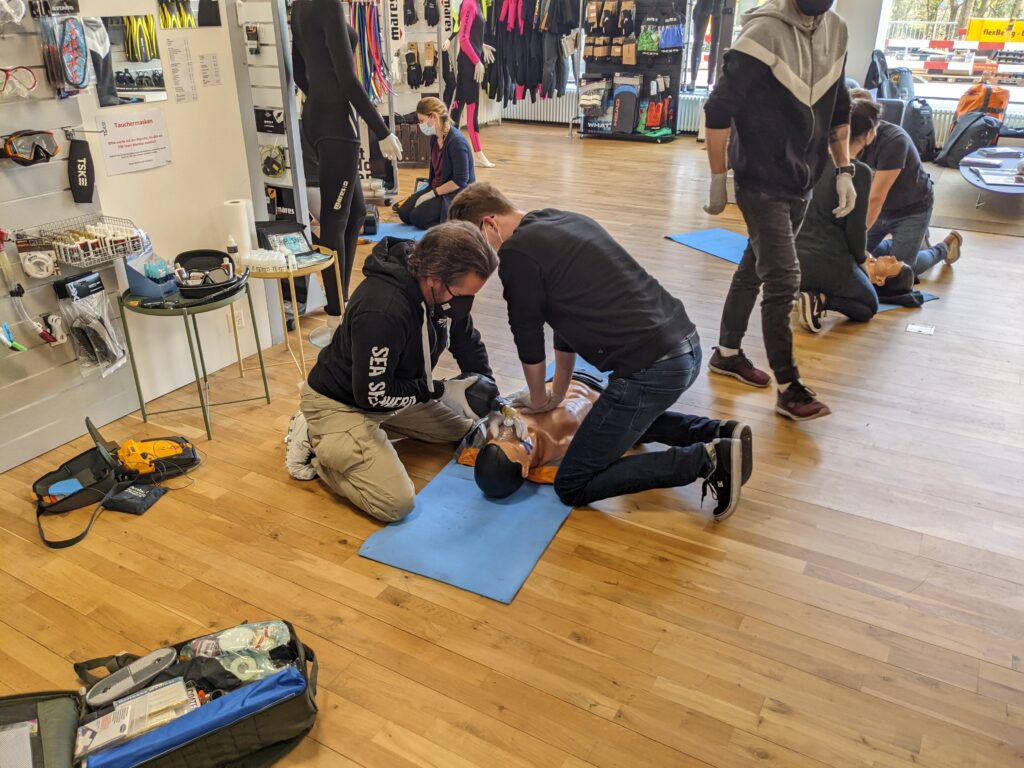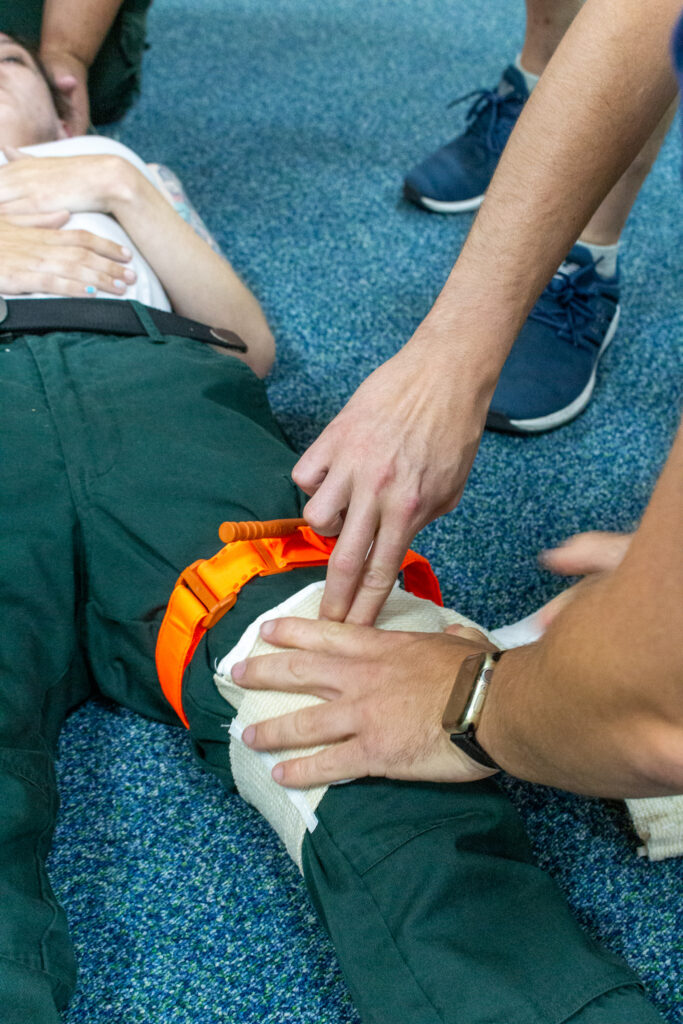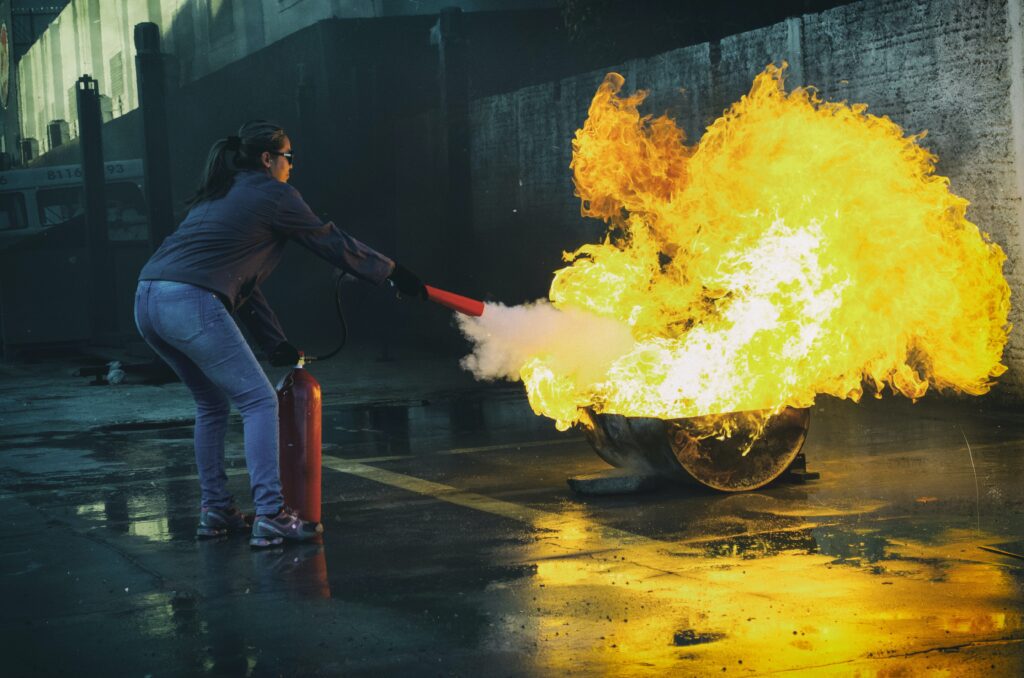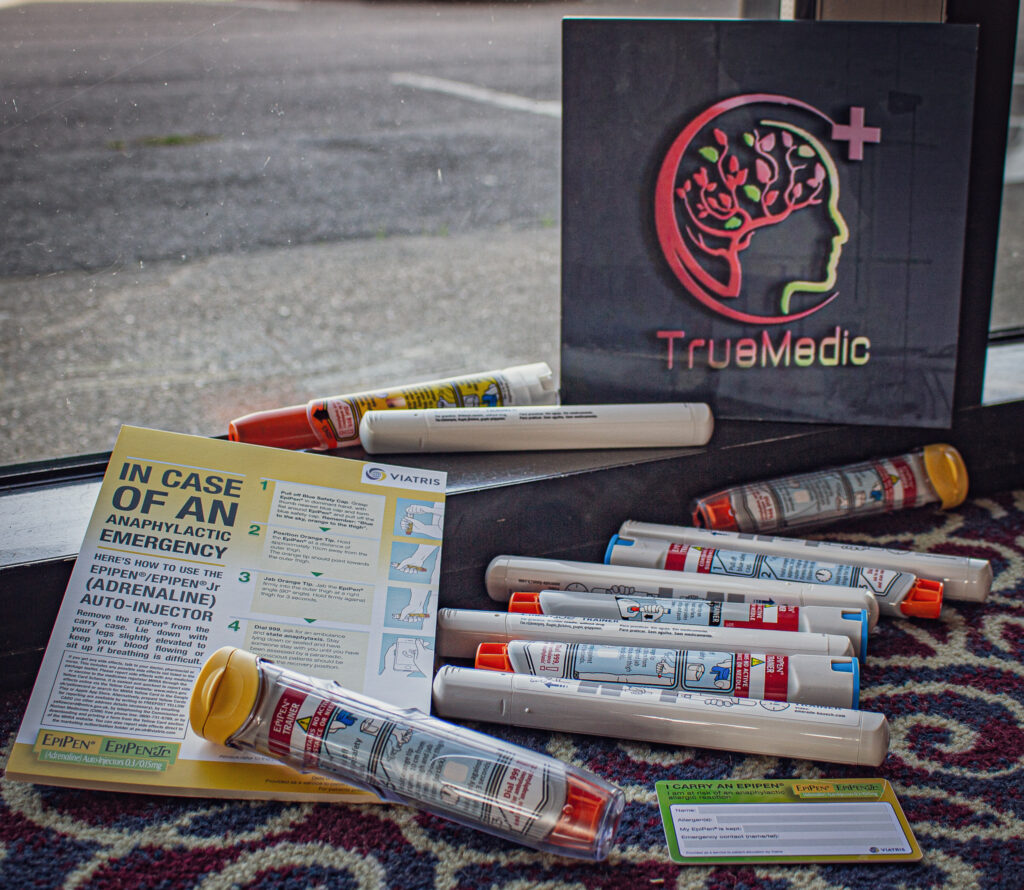Your body’s immune system is designed to protect you from any foreign element that may enter the body. However, in some cases, your immune system overreacts and causes a severe allergic reaction known as anaphylaxis. Anaphylaxis can be life-threatening and requires immediate medical attention. First aid for Anaphylaxis involves recognizing the signs and symptoms, administering medication, and seeking emergency medical help.
But we have noticed that a person often doesn’t know what to do when faced with such a situation. The situation might turn dangerous if not treated properly. If any surrounding people know what to do, they can save the life of someone in need.
So, today we will discuss the first aid for anaphylaxis (severe allergic reaction) and the steps which should be followed in such a situation. Let’s get started!
What Is Anaphylaxis?

Anaphylaxis is a severe allergic reaction that affects the entire body. It can be caused by consuming food, exposure to an insect sting or bite, taking certain medications, and more.
Symptoms of anaphylaxis are varied. Anaphylaxis is potentially life-threatening, so it’s essential to seek medical help immediately upon experiencing possible symptoms. Thankfully, doctors can treat anaphylaxis with epinephrine injections to reduce symptoms and sometimes even reverse them entirely.
Sometimes, anaphylaxis doesn’t show any prior warning signs, but the effects are still fatal. First aid for Anaphylaxis is essential to treat someone suffering from anaphylaxis and reduce the chances of death.
Signs And Symptoms Of Anaphylaxis

The signs of anaphylaxis can vary depending on the individual and the cause. However, certain general symptoms may be present in anyone suffering from anaphylaxis. These include: [1]
1. Skin Rash Or Hives
Any person suffering from anaphylaxis may experience a rash or hives on the skin. This may be accompanied by itching and swelling of the skin. The rash can also appear on the tongue and lips. As the body’s immune system responds to the allergens, it can lead to a rash or hives.
2. Difficulty Breathing
Difficulty in breathing is another common symptom of anaphylaxis. The person may experience difficulty swallowing, chest tightness, and wheezing. This could be due to the throat or tongue swelling, making breathing difficult.
3. Rapid Heartbeat
The person may experience a rapid heartbeat due to the effects of anaphylaxis on the cardiovascular system. This could be accompanied by dizziness and lightheadedness.
4. Vomiting Or Diarrhea
Nausea, vomiting, or diarrhea are also common symptoms of anaphylaxis. These may be due to the body’s reaction to the allergen in the system.
5. Abdominal Cramps
Abdominal cramps and pain may also be present in anaphylaxis. The cramps might be accompanied by vomiting, diarrhea, and nausea.
6. Flopping Motions (Especially In Children)
In children, anaphylaxis can cause unusual arm and leg flapping motions. This is known as “floppy baby syndrome” and should be treated as soon as possible.
Triggers And Causes Of Anaphylaxis
We all know that allergies usually result from exposure to an allergen, but the specific cause of anaphylaxis can be more difficult to identify. Common triggers for anaphylaxis include [2]:
1. Food
Many food allergies can cause anaphylaxis. The most common foods that trigger anaphylactic reactions are peanuts, tree nuts, shellfish, dairy products, and eggs. The percentage of people allergic to these foods varies from person to person.
2. Medication
Certain medications, such as antibiotics and anesthesia, can cause anaphylaxis. Your doctor must know about any allergies or sensitivities you may have before being prescribed these medications. The long terms use of some medications can also cause an allergic reaction.
3. Insect Sting
An insect sting or bite from wasps, bees, and other insects can cause anaphylaxis. In addition to skin rash or hives, some people may experience swelling of the throat or airways, difficulty breathing, chest tightness, and dizziness.
4. Latex
Latex can be found in many common items, including gloves and balloons. Exposure to latex can cause anaphylaxis in some people due to their sensitivity or allergy to it. To avoid any discomfort or allergic reaction, it is important to be aware of the items containing latex you come in contact with daily.
First Aid for Anaphylaxis| UK Guidelines
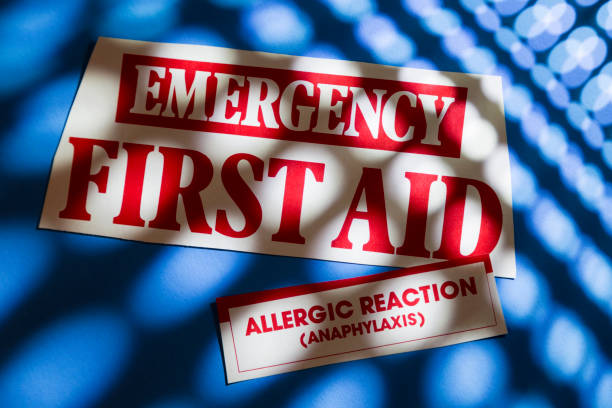
Knowing the signs and symptoms of anaphylaxis and how to respond quickly is key in treating the condition. Anaphylaxis is a sudden, severe allergic reaction that can be life-threatening if not treated immediately.
If you or someone around you has an anaphylactic reaction, these are the essential steps you should follow:
1. Call 999
It might take some time for paramedics to arrive. So calling 999 is the first step in treating anaphylaxis. Ask for an ambulance and say this is an emergency case of anaphylaxis. [4] The emergency team will also advise on how to treat the condition until they arrive.
2. Check The Airway
The second step is to ensure that the person’s airways are open and clear. If their throat has closed up, it must be opened manually or with a tube inserted into their mouth or nose.
3. Stay Calm
It is important to stay calm while helping someone with anaphylaxis. Panicking will not help and may make the situation worse. Reassure the person that help is on its way.
4. Remove Triggers
If the person has an allergic reaction due to food, medication, or insect bite, remove it immediately. You need to understand the cause of the reaction quickly, avoid it and treat the symptoms.
5. Administer Medication
If the person has an EpiPen (epinephrine auto-injector), help them administer it immediately. This lifesaving drug can reverse most of the danger signs and symptoms of anaphylaxis. Usually, if a person faced an anaphylactic reaction, they would have their EpiPen. So check if the person has one with them and help them use it.
6. Raise The Feet And Loosen Clothes
Raise the feet of the person having an anaphylactic reaction to improve blood flow throughout the body. Loosening up tight clothing such as belts, ties, and collars will also make them more comfortable.
7. Turn Them On Their Side (In case of Vomiting)
If the infected person is vomiting, turn them on their side to prevent the vomit from entering their airways.
These are the primary steps that you should follow to treat anaphylaxis. After the paramedics arrive, they will provide additional care to ensure that the person is recovering from the reaction.
Types Of Anaphylaxis Reactions
Some people might get confused about the types of Anaphylaxis; however, it is important to understand the differences between them to handle the situation better. There are three main types of Anaphylaxis:
-
Uniphasic Reaction
This is the most common type of allergic reaction, and it involves one wave of symptoms that typically last between 30 minutes to an hour. About 80-90% of all cases of anaphylaxis are uniphasic, meaning it can be treated and does not require medical attention. [3]
-
Biphasic Reaction
This second type of reaction involves the second wave of symptoms about 8 to 10 hours after the first wave. People with Biphasic Anaphylaxis should seek medical attention as soon as possible.
-
Protracted Reaction
The longest type of reaction, Protracted Anaphylaxis, lasts days or weeks. This type is characterized by recurrent episodes of anaphylactic symptoms over a long period and must be treated with extreme caution as it can be very dangerous.
Complications For Anaphylaxis
When left untreated, a person might face severe and life-threatening complications due to anaphylaxis, including cardiac arrest, respiratory distress, and shock. The blood pressure might also drop, leading to sluggish blood circulation.
Anaphylaxis is usually taken as very easy to treat, but it can also cause death if not treated properly and promptly. It is, therefore, important to be well-informed and take the right action as soon as possible during a First Aid For Anaphylaxis attack.
FAQs
1. Can CPR help in case of anaphylaxis?
Yes, CPR can help with anaphylaxis as it helps to keep blood and oxygen flowing throughout the body. But CPR requires sheer professionalism to perform, so if you are not trained in CPR, it is best to seek medical help.
2. Can anaphylaxis be prevented?
Although there is no surefire way to prevent anaphylaxis, some steps can be taken to reduce the risk. If you have a known allergy, it’s important to avoid exposure to the allergen. Be sure to carry your epinephrine auto-injector and learn how to use it. Also, if your allergies are severe, speak to your doctor about getting a medical alert bracelet or necklace.
3. Can I take any supplements for anaphylaxis?
No, no supplement can prevent or cure anaphylaxis. Taking supplements may help support your overall health and well-being, but they will not help if you are currently experiencing an allergic reaction.
References:
[2]https://www.mayoclinic.org/first-aid/first-aid-anaphylaxis/basics/art-20056608
[3]https://www.healthline.com/health/first-aid/allergy-attacks#types
[4] https://www.anaphylaxis.org.uk/about-anaphylaxis/what-to-do-in-an-emergency/


